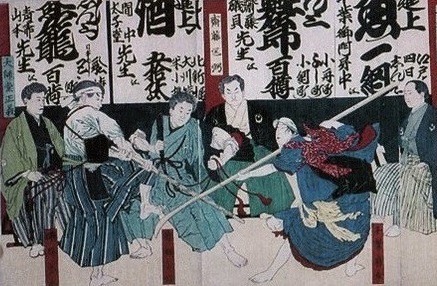Shikaku (Eligibility Requirements)
To be eligible to test for yonkyū, a candidate must meet all of the eligibility requirements listed below:
| n | A minimum of two (2) months additional training in Eishin-Ryū iaijutsu since promotion to gokyū | |
| n | Participate in a minimum of twenty-five (25) one-hour iaijutsu training classes since promotion to gokyū |
| n | Own and wear an iaidō-gi (or hakama with approved uwagi) that conforms to Seishin-Kan standards | |
| n | Own and use a bokken (aka bokutō) and iaitō that conform to Seishin-Kan standards | |
| n | Consistently exhibit appropriate attitude and behaviour in the dōjō | |
| n | Submit a written request for promotion testing on the prescribed form |
>back to top


